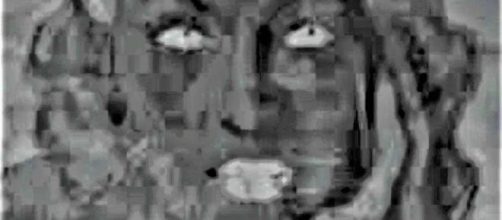You might call this a “so what” story for any number of reasons. The fact that the storyline keeps reoccurring is one. Let’s go with that for the moment.
Ever since the 19th-century discovery of infrared reflectography to detect pigment beneath the surface of a painting, detections regularly make the news.
The latest finding: a female face was found under Rene Magritte’s “The Fifth Season,” (“La Cinquième Saison”) in Brussels’ Royal Museum of Fine Art where the painting is held.
Does this matter?
The Guardian hails the underpainting as a “secret portrait” with “hidden meaning.” Let’s stop right there.
“Secret portrait”? “Hidden meaning”?
What makes a crossed-out image mystifying? How does replacing a woman’s face with two men in bowler hats carrying framed paintings under their arms become cloak-and-dagger?
Artists routinely mask out their visions with second thoughts. Has it occurred to anyone at the museum in Brussels that by erasing the female face, Magritte didn’t want anybody to see it?
Isn’t exposing an image that a painter discards a little like scoping out an author’s crossed out writing? Isn’t all this tantamount to going through someone’s trash?
Is that you, Georgette?
An iffy identification of the woman in the underpainting is floating around the art world – presumably Magritte’s wife Georgette who was known as his muse.
Would he have expunged the face of a woman who was the source of his inspiration?
You bet he would! He practically tells you that in the 1977 bio “Magritte, Ideas and Images” by Harry Torczner. Speaking at length about things he dislikes, “all the obligatory sentiments” was on his list.
Another probable reason for Magritte to wipe out Georgette’s face shows up in another quote: “I take pains never to be conventional.” If the underpainting is that of his wife, likely he thought better of it and crossed her out of the picture. After all, he had a reputation to uphold, which he made clear in these words: “When one sees one of my pictures, one asks oneself this simple question, ‘What does it mean?’ It does not mean anything, because mystery means nothing either, it is unknowable.”
Given all his reported views, why didn’t anyone at the Magritte Museum, (which is part of the Royal Museums in Belgium), know of his distaste for sentimentality and convention?
And why is the museum’s “discovery” included in a forthcoming book, titled ? “Rene Magritte: The Artist’s Materials”?
Ars Technica quotes a researcher at the University of Liege and the Royal Museums, Catherine Defeyt, explaining that Magritte rarely talked about the painting materials and techniques he used.
But why should he? The man was after mystery. He wouldn’t want the public to know his tricks. Defeyt doesn’t seem to get it, saying that understanding Magritte’s materials and techniques is critical to preserving Magritte's legacy.
That can’t be right. Knowing how this artist coveted the unknowable, I doubt he would agree that his materials and techniques are his legacy.


